

Home
Research Interests
CV & Publications
Teaching
Lab Members
Field Research
Research in the News
Prospective Students
Prospective Field Assistants
Links
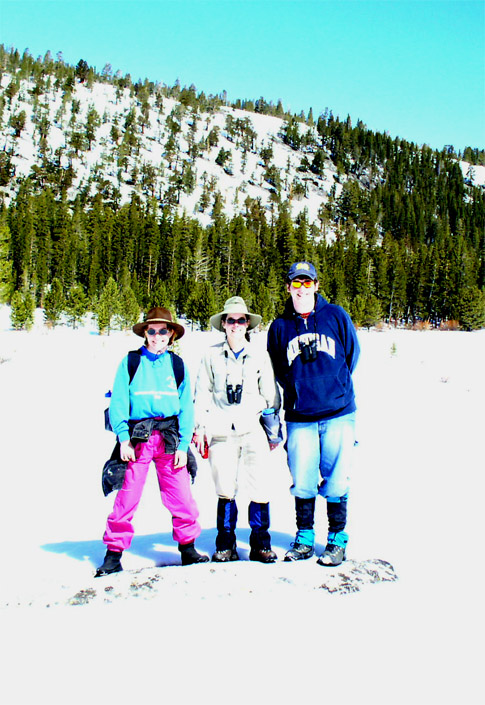 |
| 5/28: the meadow is covered by at least 6' of snowpack. Field assistants on top of a boulder; normally, they'd be 5' off the ground, and although it is difficult to tell from this photo, the snow almost covers the rock. |
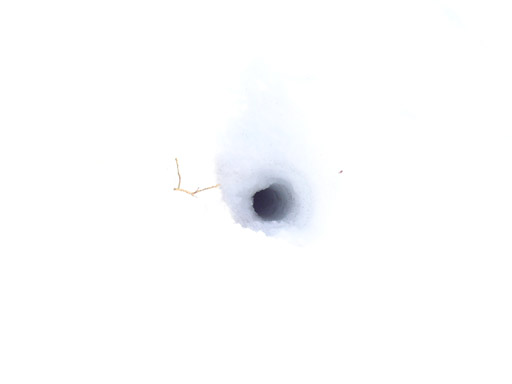 |
| The squirrels burrowed through up to 6' of hard-packed snow to reach the surface after arousing from hibernation. |
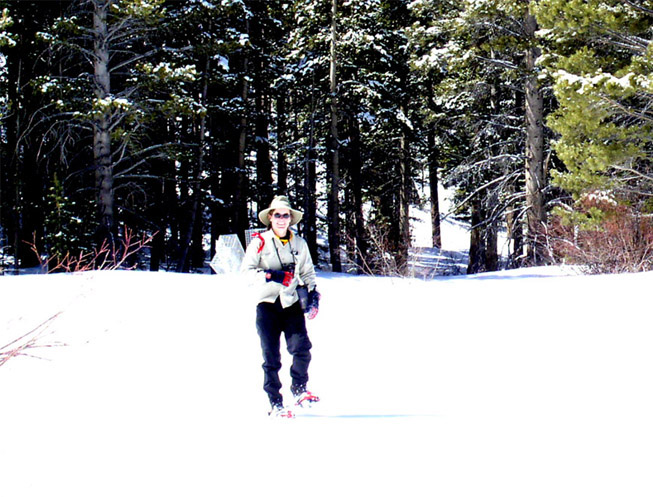 |
Wendy Peacock Tidhar trapping, in snowshoes, as squirrels emerge from hibernation. |
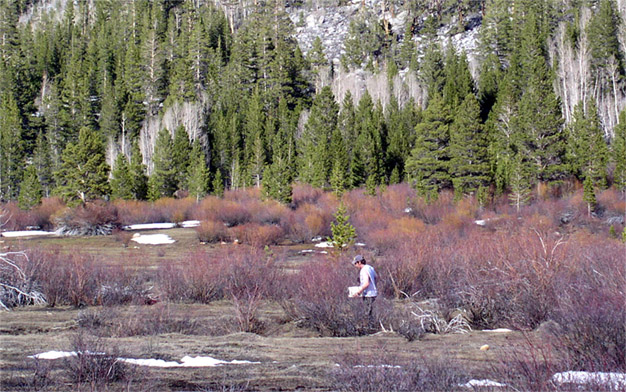 |
| Jared Bruck chasing a male squirrel during mating. Males run miles a day fighting with other males and courting females. Jared kept up, plowing through creeks and snowbanks to follow those males! |
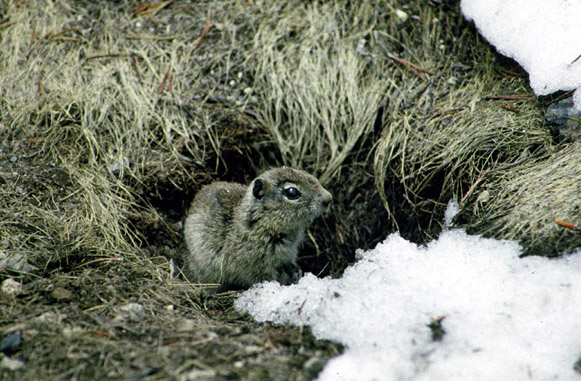 |
| There's nothing to eat, and nothing to do except wait for mating to begin, and avoid being eaten by predators. A pine marten and an immature red-tailed hawk frequented the meadow, and the marten was seen carrying away a squirrel. |
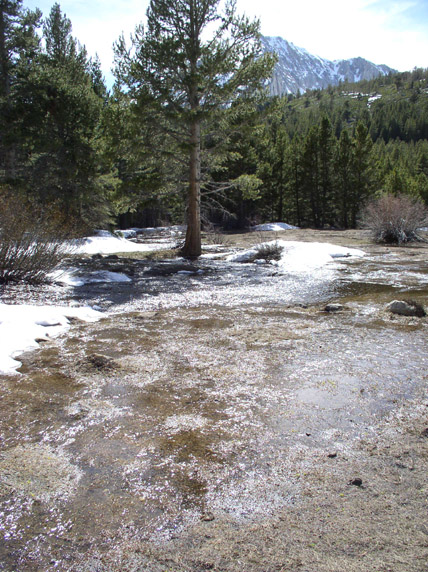 |
| After several 60+ degree days, the snow melted fast, causing streams to overflow and flooding the entire meadow. Water poured into and out of burrows. Squirrels had to take refuge in the few dry burrows found under willow bushes. |
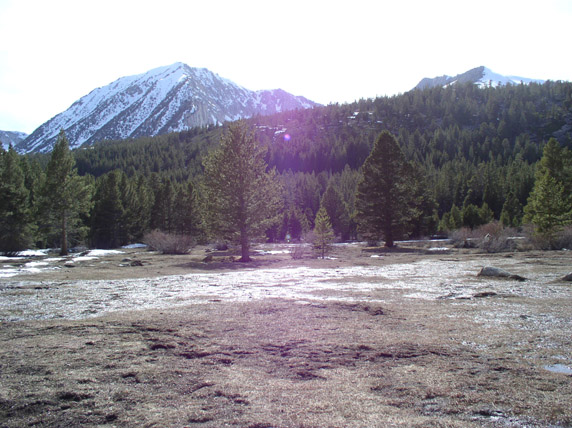 |
| More flooding. The ground was so saturated we sunk into 6" of mud. |
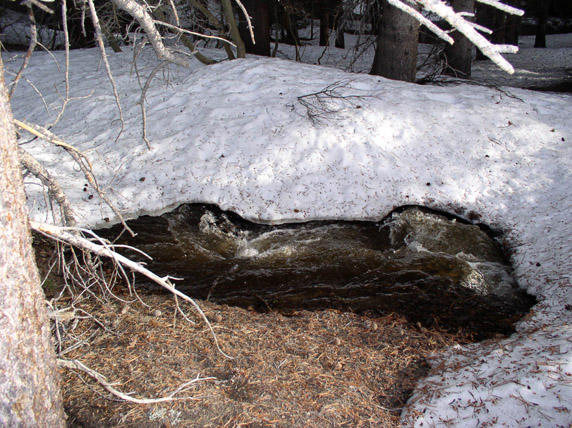 |
Stream beds appeared everywhere. One had to listen carefully for them, until the snow finally broke above them and we could see the channels. |
|
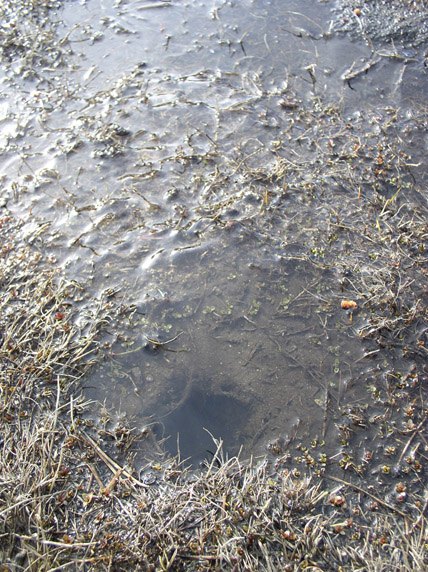 |
This was "J"'s natal burrow last summer; during the snow melt it was full of standing water. |
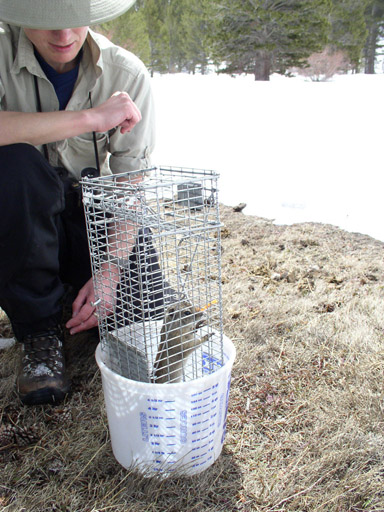 |
| An adult male "Beard" emerged from hibernation as early as April 28; he sits in a trap in a bucket, so we can collect his feces for non-invasive monitoring of stress hormones. We didn't see any other squirrels until May 13, and the first matings did not occur until May 22. That was a long, lonely wait for Beard, but when mating started, he was often the first to have access to a female, and we saw him mate with at least 9 females. Although we worried about his early emergence, and not eating for almost a month, Beard seemed to be in good condition throughout, and we expect to see many of his kids emerge from natal burrows in a few weeks. What a stud! |
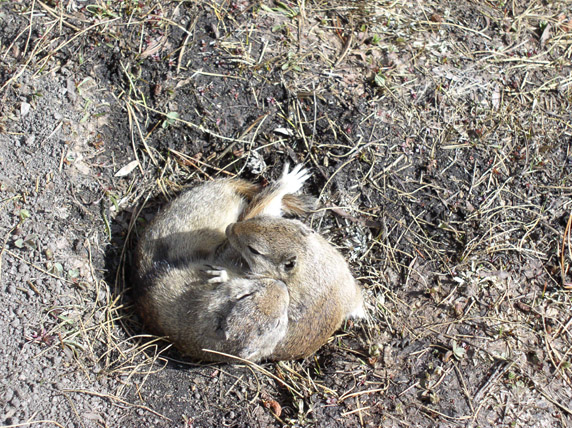 |
| The floods are done and the meadow begins to dry up. Mating begins on May 22. Belding's ground squirrels typically mate aboveground, and in the open. This is unusual for ground squirrels - heck, for most rodents - but it allows us to observe with certainty who is mating with whom. |
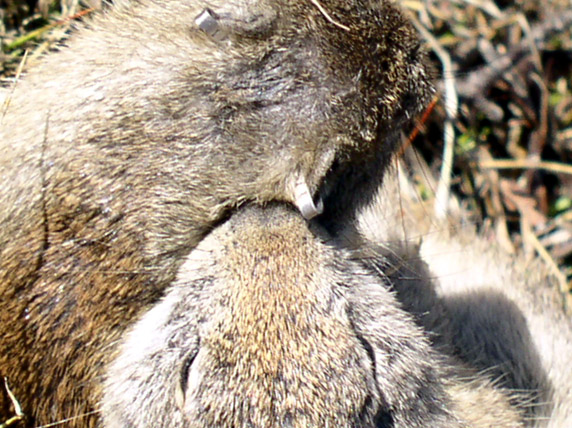 |
| As I said, ground squirrels allow us to get VERY close when they are copulating. I can almost read the numbers on her ear tag! |
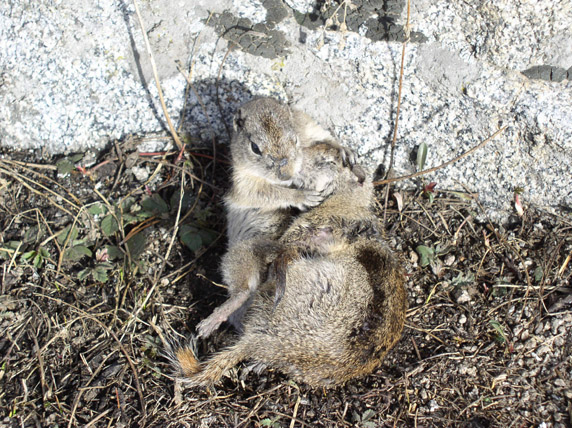 |
| Males usually bite the neck of the female. Females struggle to bite onto something on the male, twisting and flailing to push the male's mouth away, or to hold on. It's hard to tell, despite the ease of observing them! Note also that males tend to have their eyes closed, but females keep them open. |
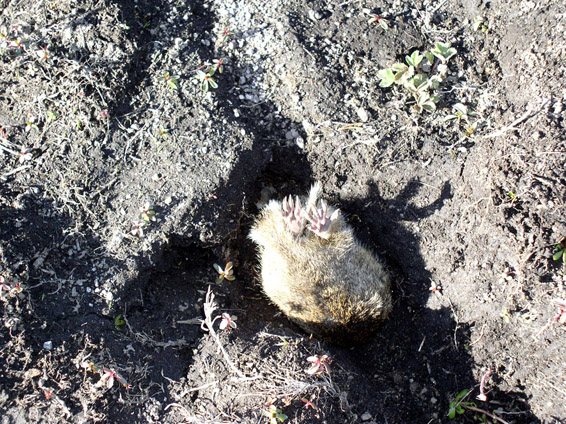 |
So, what do you think this is? Send your ideas to jmateo@uchicago.edu Some ideas submitted so far (and my thanks to the writer!) : |
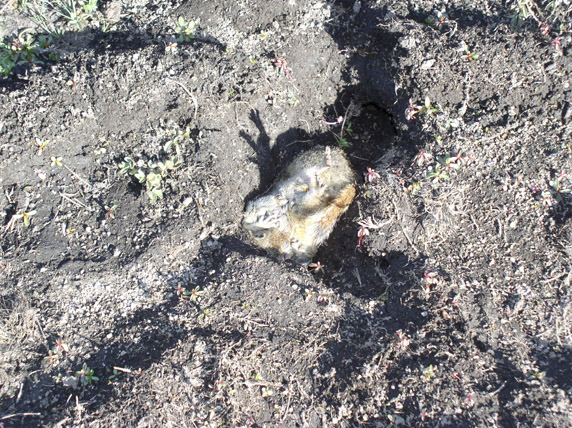 |
| Another angle of the same. |
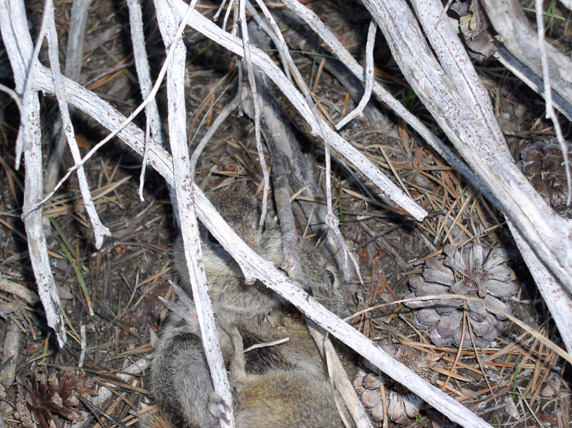 |
| Occasionally ground squirrels mate under cover, this time under a willow bush. Note how they use the branches for leverage, pushing with their feet. This copulation was the eighth for this female, and she started chewing on a branch during the act. She must have been hungry! |
|
| Remember our stud male Beard? Here he is after the mating season was over. Males aim for the throat when fighting with other males, sometimes inflicting fatal injuries. Beard was injured several times, but not seriously. His throat was already starting to heal before the mating was over. |
 |
| If you look closely at Beard's face, you'll see scabs and scars. Some came from other males, during fights, but some from females, who bit his cheek during copulations while he bit their necks. |
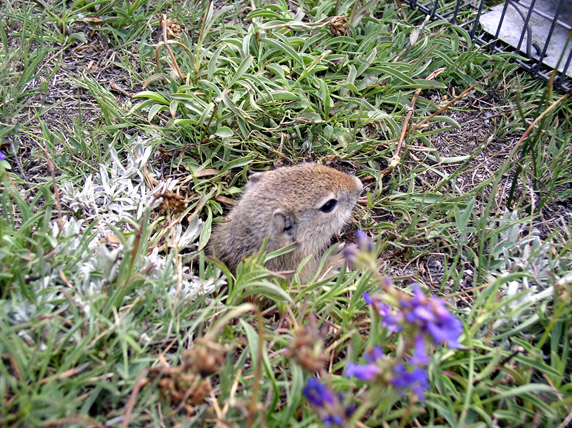 |
| Now we await the result of these matings - the emergence of juveniles. |
 |
| We collect hair from juveniles, to non-invasively collect DNA and assess paternity. unique visitors since 23 November 2008 |
